
Background information
Stalker finds victim through reflection in selfies
by Dominik Bärlocher
A stalker has managed to locate his victim by analysing the reflections in his selfies. The test proves it's possible, but it depends on a number of factors.
Beware of selfies! The reflections in your eyes can tell a stalker where you live. This was demonstrated when Japanese singer Ena Matsuoka was attacked by a stalker who found out where she lived. He analysed the star's selfies and photos and found out where her flat was. He waited for her to return home after a concert and assaulted her. Ena defended herself, the man confessed.
The shock remains.
The scenario of the stalker and the selfies is particularly specific. To reduce this case to a question of selfies would be misleading, if not false. Certainly, the selfies played a role, but during his interrogation, the attacker Sato Hibiki indicated that he had taken several factors into account to find Ena's flat. As well as the portraits of the young woman, he also looked at the curtains, determined the position of the sun from the shadows and then calculated which floor she lived on.
.
We think it takes a lot of random factors to converge for a reflection in a selfie to reveal where you live. We are going to test this theory. The question is: what circumstantial factors need to come together? To determine and evaluate these factors, we are reconstructing the case of the Japanese stalker. We will then be able to draw conclusions.
Aside from his indications of the sun's position, Sato Hibiki has not revealed much about his analysis of the selfies. Or perhaps the local police have remained tight-lipped about the matter. That's understandable, because if the police were to give details of how "the man spotted the tram station in a reflection two days before attacking his victim", future stalkers might well take inspiration from his methods.
Japanese police nevertheless said Sato recognised the reflection of a bus stop or train station. He then found the corresponding stop on Google Maps and continued his deductions from there.
It is understandable that Sato did not recognise the stop itself, but only a key feature of any stop, be it a bus or tram stop, or even a railway station.
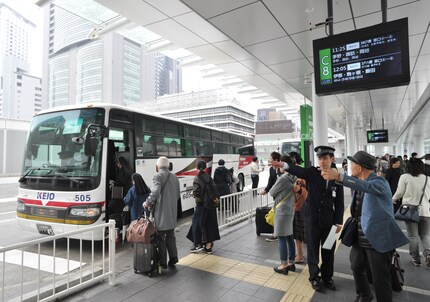
The key element in this photo is the visible indicator of a bus route number.
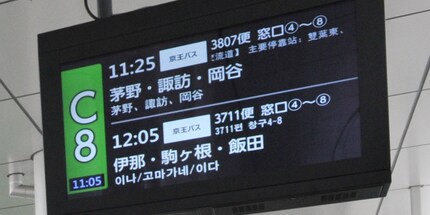
Once you've spotted "C8" in the photo, it's child's play to follow the bus route on Google Maps.
So it's not essential to be able to recognise the precise location in the reflection. All you need is a good indicator that allows rough localisation.
To find out for sure, we're conducting an experiment with the help of Jeanine Meier, make-up artist, photographer and collaborator at Digitec. Jeanine is the perfect candidate. She's about the same height as Ena (Jeanine is 1.50 m tall, 6 cm shorter than Ena Matsuoka), and knows all about the effects of light and shadow in photography. We want to see if height and arm length play a role.
First of all, we are looking for a location that we will identify with the same type of clues as those exploited by Sato Hibiki. Out of pragmatism, our choice is the Technopark tram station in Zurich.
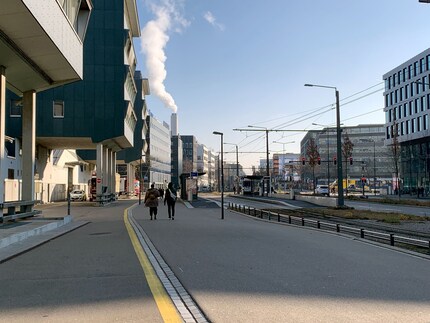
The digitec offices are behind Jeanine.
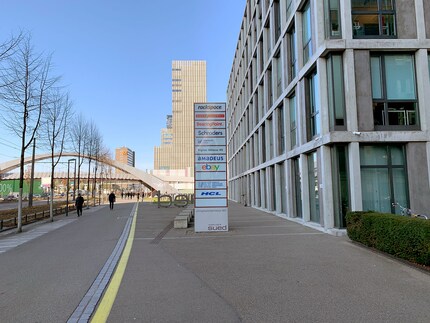
In the reflection, we look for the purple part of the sign with the number of tram line 4. The photo is taken with a rose gold iPhone XR.
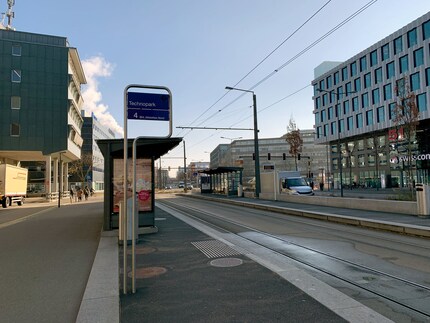
Jeanine stands in the middle of the street between the digitec building and the tram stop and takes a selfie, as she usually would.
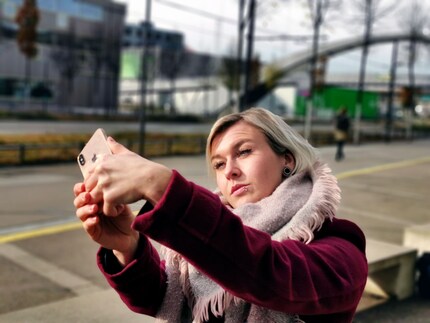
People taking selfies always look ridiculous, but the result is easy on the eyes.
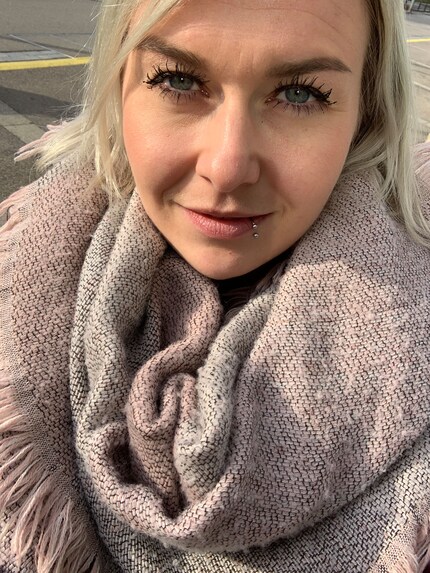
Aesthetic considerations aside, we're interested in Jeanine's blue eyes. The colour of the eyes is worth mentioning, as this detail can alter the result. Ena's eyes are brown, so it obviously works with this iris colour. In fact, according to Jeanine, the contrast between the light and the reflective surface plays a major role in the reflections. Therefore, if the experiment doesn't work with Jeanine's blue eyes, we'll try again with dark eyes.
The photo doesn't reveal much.
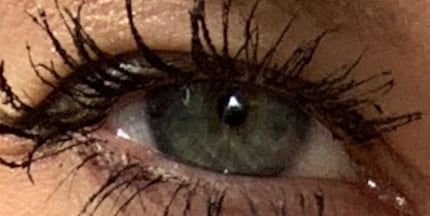
On the one hand, the iPhone software which edits the photo enormously. It also applies a series of filters that are supposed to optimise photos for sharing on Instagram and the like.
On the other hand, the phone itself appears in the reflection. Indeed, the panel with the number 4 is more or less behind the reflection of the phone. Apart from that, the recognisable elements are almost non-existent: something that might look like a house, but in reality is just a dark area, and the horizon.
After some deliberation, we come to the conclusion that there may be too much light, exaggerating the contrast of the reflection. In other words, dark colours tend towards black and light colours towards white. Details disappear.
Before going to the digitec studio where we can totally control the light, we want to give natural light another try. In the entrance hall to the digitec offices is a white panel with the blue D.
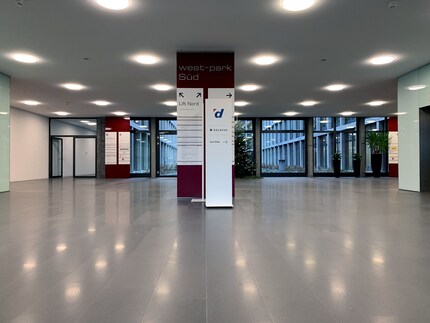
We shorten the distance between Jeanine and the panel to force a reflection. We also change the angle. The smartphone must not obscure the logo in the eye. Jeanine contorts her body.
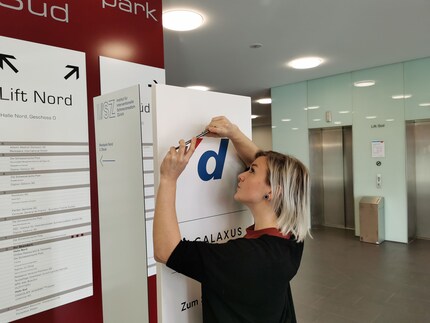
No need to look at the shot on the computer, the experience ends there.

On the iPhone screen, the logo is already clearly recognisable in the right eye.
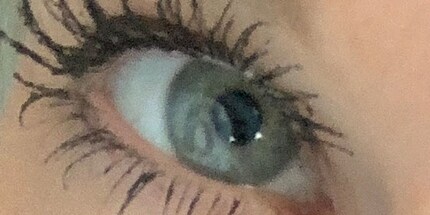
The proof is in the pudding: it is possible to identify a location with certainty thanks to a reflection in a selfie. To do so, however, the place itself must have a more or less unique characteristic.
We can continue the experiment with this photo. In fact, Sato did not analyse the original photos taken with Ena's camera. He used photos posted on Twitter to conduct his investigation. When you share a photo on Twitter, the file is compressed, the EXIF data that allows direct identification is removed and the photo is renamed.

The original photo gives me the following EXIF data:
The zoom on the eye clearly shows the logo.
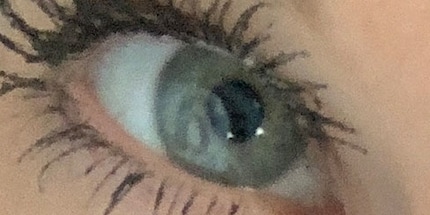
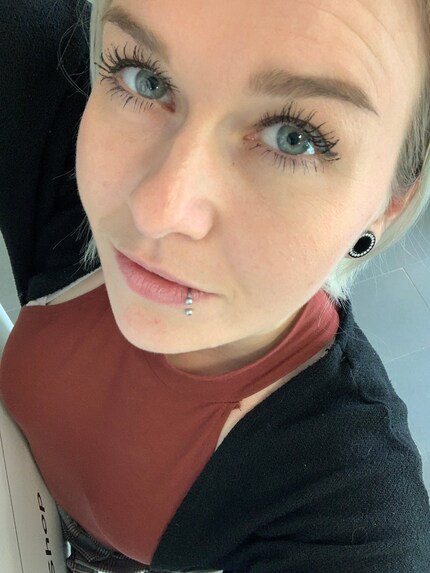
Twitter compresses the photo and removes the metadata.
The pixel dimensions do not change, but the dpi decreases.
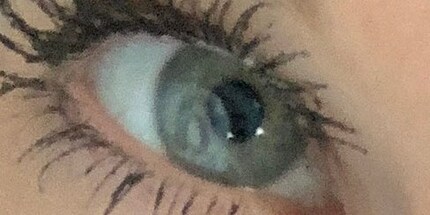
The direct comparison shows minimal differences in the logo itself, but even after the switch to Twitter, it is still clearly recognizable.
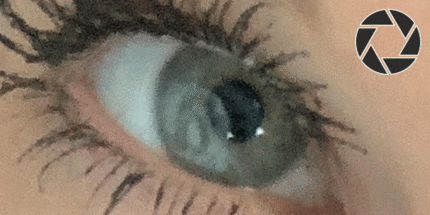
For this reflection to occur so distinctly, technological factors are not the only conditions required. The photographic aspect must also come into play.
To identify a location with certainty, words must be discernible in the reflection. In other words, the word "Technopark" at the tram stop must be legible. It is extremely unlikely that this is the case.
This is not to say, however, that it is impossible to identify a place using a selfie. If you can recognise the colour purple or the number 4 in the photo, all you need to do is:
In this case, the bugs are not the reflections, but the elements in the background of the photos. Only in very rare cases can the reflection alone identify a place with certainty. More often than not, indirect identifiers are needed to recognise a place with certainty.
Conclusions of the experiment:
Can a reflection in a selfie reveal a specific location? Yes, but it's extremely unlikely that the reflection itself is enough. It's not to do with technology, but with the nature of our world. As a general rule, the reflection needs to be accompanied by revealing elements in the background.
That's it, we're done. If you want to know more about how to securely share your selfies (naughty or otherwise), I explain everything in the following article.
Journalist. Author. Hacker. A storyteller searching for boundaries, secrets and taboos – putting the world to paper. Not because I can but because I can’t not.
Practical solutions for everyday problems with technology, household hacks and much more.
Show all